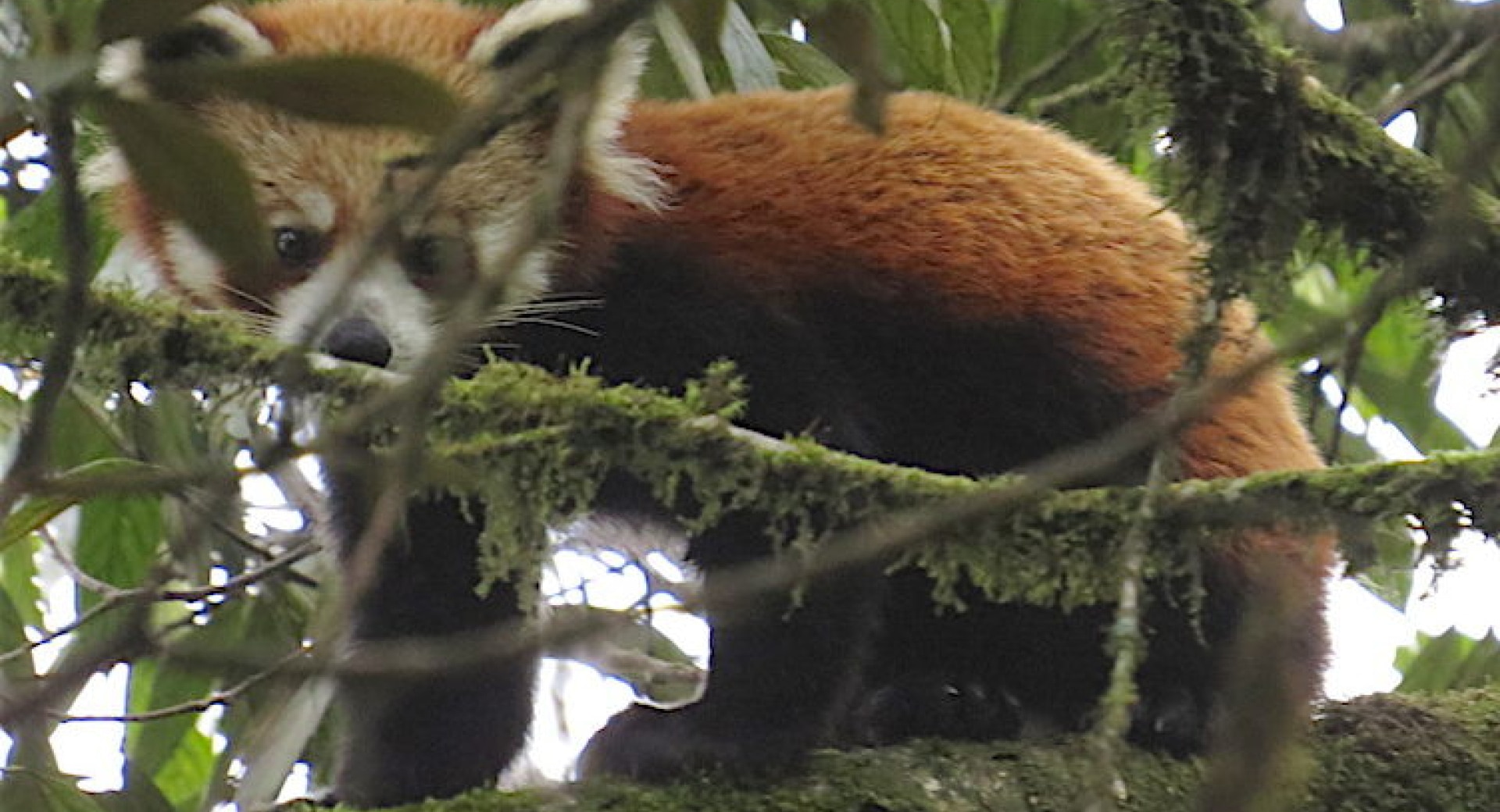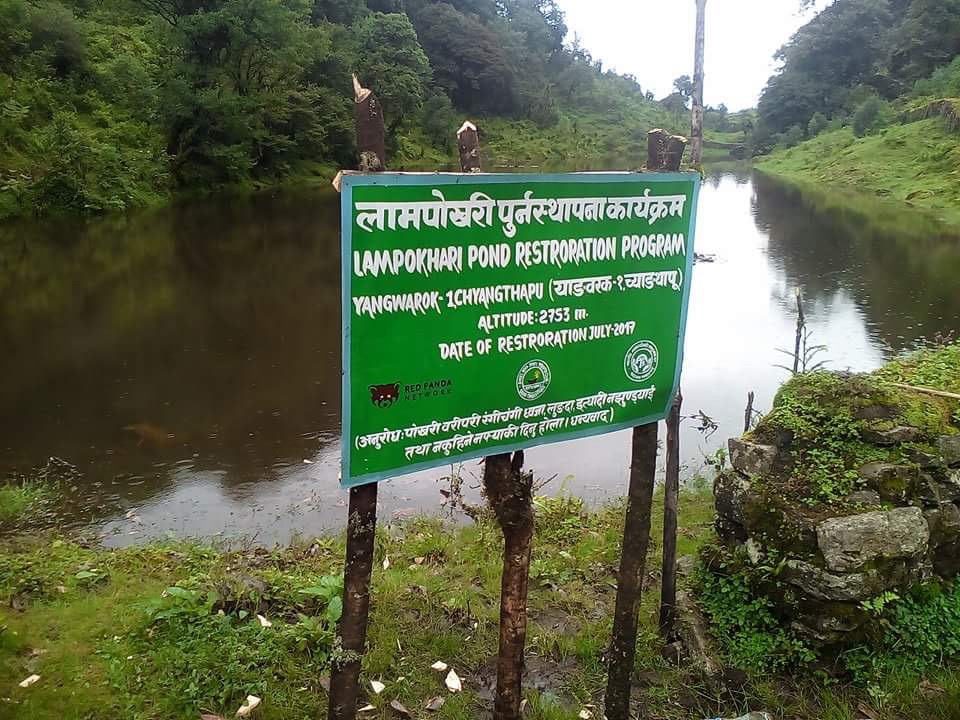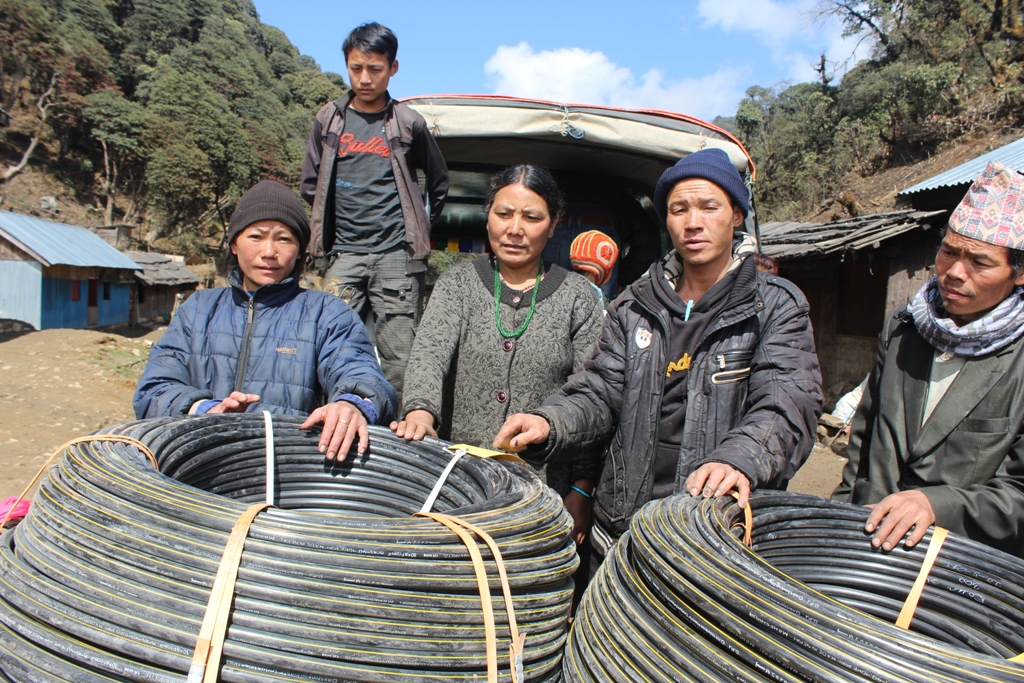
RPN RESPONDS TO POVERTY WITH MULTI-TIERED PROGRAMS THAT STRENGTHEN LOCAL ECONOMIES WHILE SUPPORTING PEOPLE IN ACHIEVING SUSTAINABLE LIVES.
Communities are unable to prioritize conservation when they are preoccupied with the struggle to meet their basic needs. For the under-resourced people of Eastern Nepal, this struggle is real as they face inadequate access to resources—such as clean drinking water, technologies and income generation opportunities.
Mr. Krishna Acharya of Dobaate, Sandakpur Rural Municipality, was transporting water from a stream that was more than 2 km away to his home for his disabled wife and children. This was a demanding task that made it difficult for him to focus on supporting his family and other important responsibilities.
Then RPN restored a nearby pond, which now serves as the drinking water source for local villagers.
Today, Krishna only has to walk 5 minutes from his home for water. There has also been a significant rise in red panda and other animal sightings in the area which creates ecotourism opportunities that provide sustainable income to local people.
 Pond restoration site in Panchthar district, Eastern Nepal.
Pond restoration site in Panchthar district, Eastern Nepal.
Sujata Rai and her family, and many members of her community in Panchthar district, Eastern Nepal, suffered from waterborne diseases on a regular basis due to contaminated water. They often walked a significant distance in search of clean, drinking water. RPN successfully restored and purified a nearby water source called "Majaule". Now, 40 households and 80 school children have access to clean water. Accounts of waterborne disease are down and Sujata and her community—who no longer have to trek long distances in search of drinking water—have more time for other important daily activities.
RPN also provided access to drinking water for 13 livestock herders of Panchthar district through the installation of installed drinking water pipes. Herders are often located in remote areas and have to travel by foot to distant water sources, which are also utilized by local wildlife. The pipes will make daily life easier for these herders, improve their health and reduce competition for drinking water resources.
 Water Pipe Distribution.
Water Pipe Distribution.
Local wildlife has also benefited from the restoration of these water sources. Forests are no longer being impacted by encroachers in search of water. Many animals—including red pandas, depend on this water, especially during dry seasons. We have witnessed a significant rise in wildlife sightings near the restoration sites, which make these locations ideal for RPN ecotrips. Ecotourism contributes to economic growth and creates sustainable income opportunities for local people, who no longer have to depend on the harmful extraction of forest resources for their livelihood needs.
